Демократическая Республика КонгоDemocratic Republic of the CongoНа карте мира Map8–10 июля 2013 July 8–10, 2013 Не надо путать Демократическую Республику Конго с Конго. The Democratic Republic of the Congo shouldn’t be confused with the Republic of the Congo. Народ набит в «духе смерти». Кто-то продает багеты, кто-то везет смотанный матрас. Микроавтобус не едет, его толкают президенты — Касавубу, Мобуту, Кабила-отец, Кабила-сын. Это жизнь ДР Конго. В этой сцене — вся Демократическая Республика Конго. The «spirit of death» is packed with people. One person is selling baguettes, another is carrying a rolled-up mattress. The van has broken down; it’s being pushed down the road by the presidents: Kasa-Vubu, Mobutu, Kabila Sr., and Kabila Jr. This is the DR Congo in a nutshell. This scene perfectly summarizes life in the Democratic Republic of the Congo. 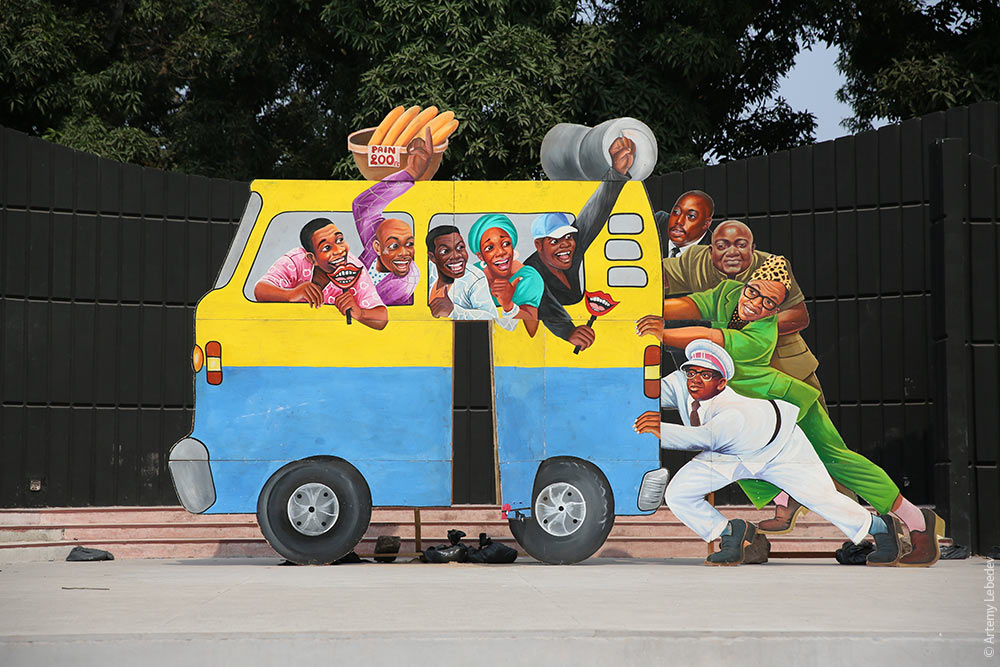 Как и положено африканской стране, у входа в каждое более или менее важное здание (гостиница, госучреждение, ресторан, офис) сидят изнывающие от скуки охранники. Иногда кажется, что они приглашают поскучать с собой еще пять знакомых. Since this is Africa, every more or less important building (i.e. hotel, government agency, restaurant, office) has security guards sitting outside. They all look bored to death. Sometimes you get the impression that they’ve invited five of their friends to sit around and be bored with them. 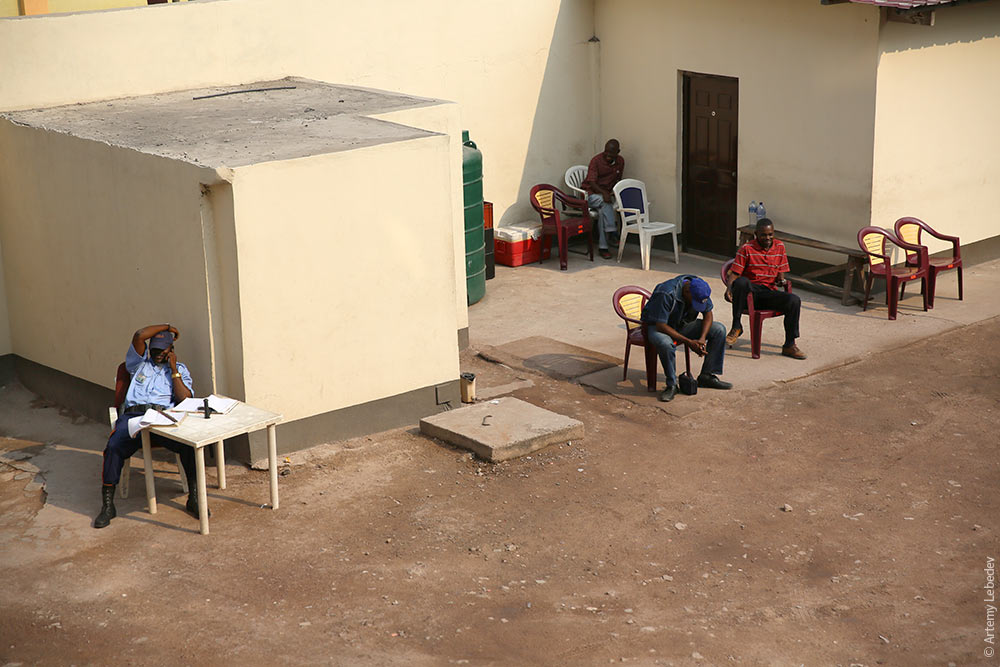 Автомобильный номер ДР Конго. Цифры и буквы как в Европе — особой формы, которая позволяет определить знак по одной только верхней или нижней части. A DR Congo license plate. The letters and numbers are like the ones in Europe—they have a unique shape which makes it possible to read the plate even if only the top or bottom is visible.  Скоро пешеходный переход. Pedestrian crossing ahead. 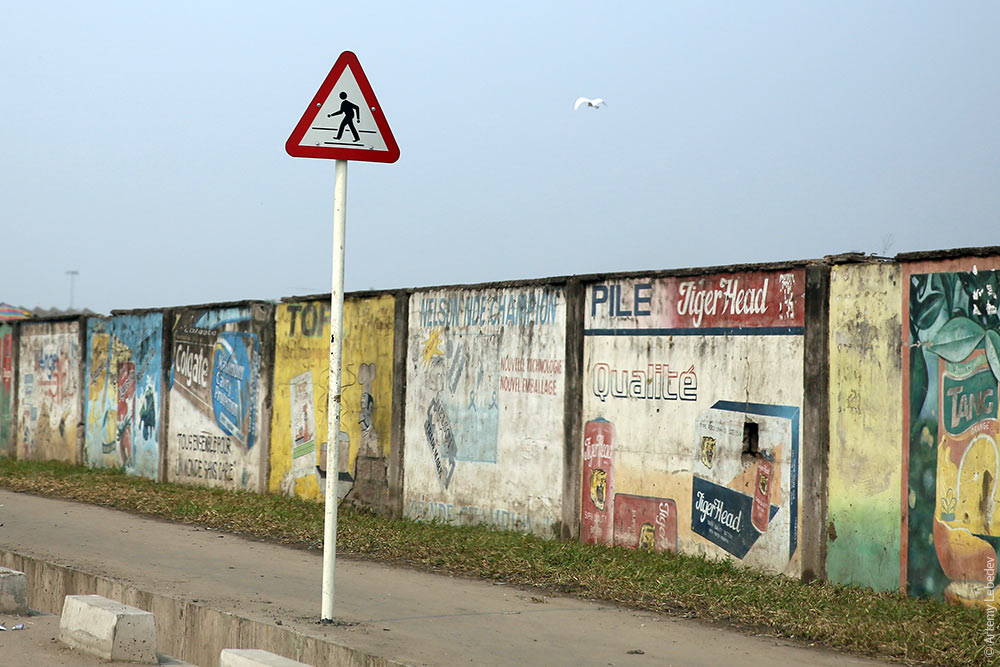 Па-бам! Пешеходный переход. Ta-da! The pedestrian crossing. 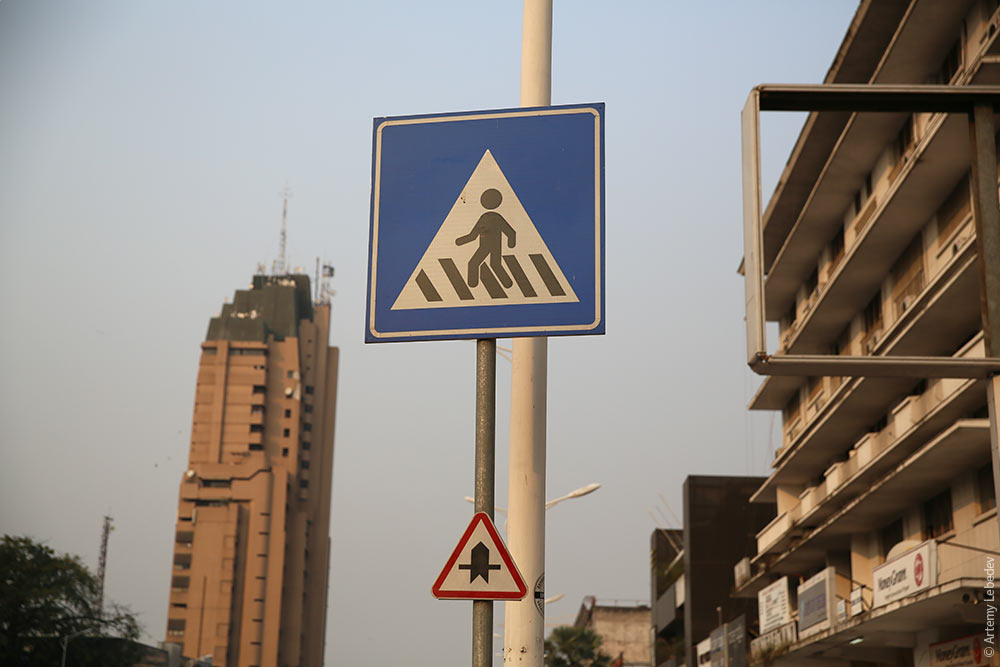 Дети. Взрослые уже совсем. Children. All grown up already. 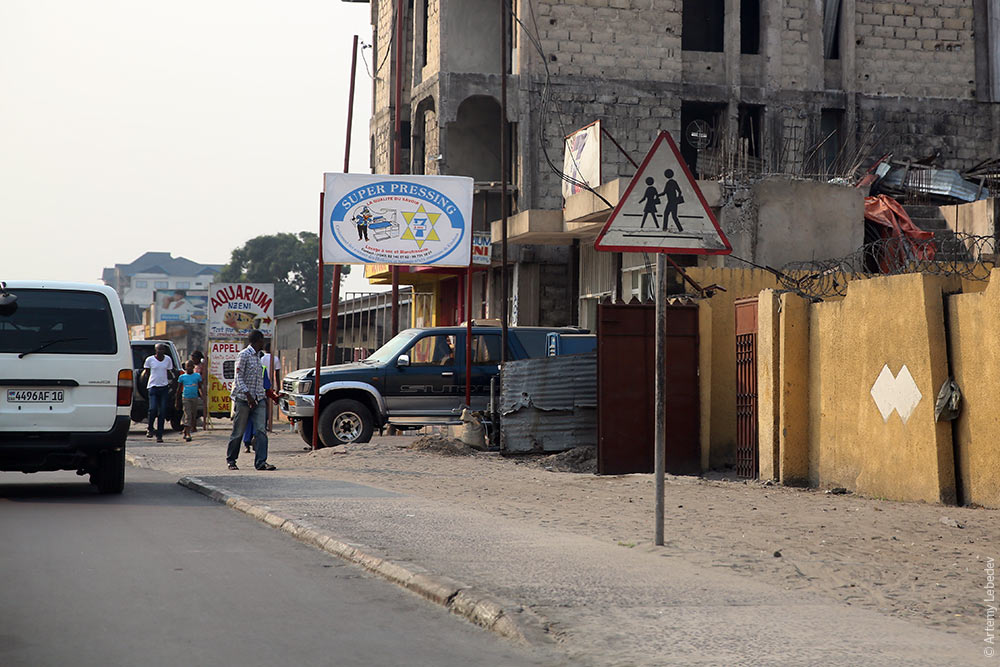 Километровый столб. A kilometer marker.  Паровоз. A steam locomotive. 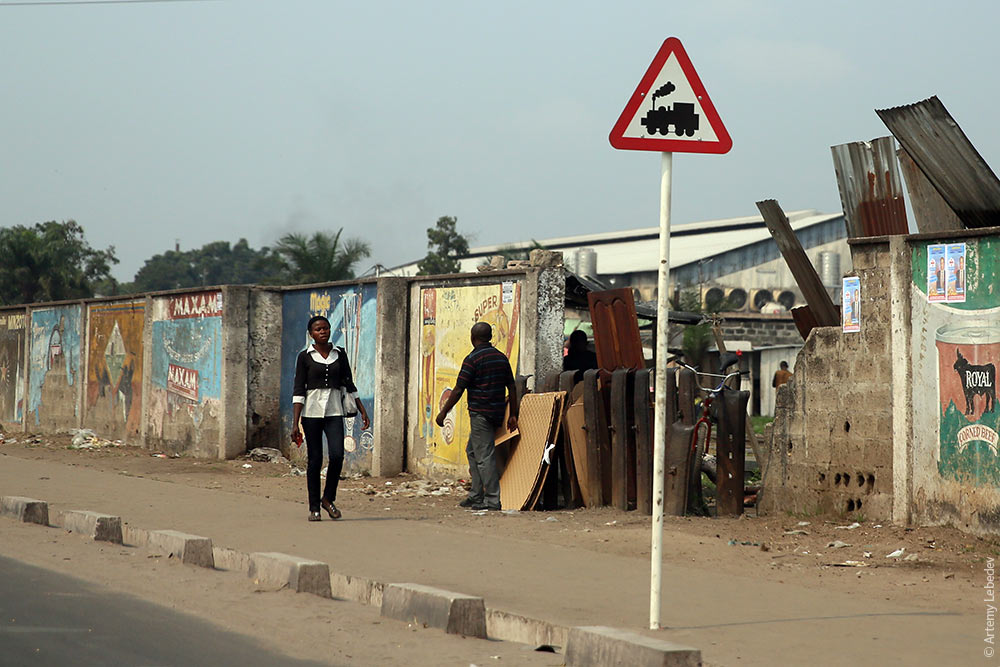 Цифры на знаке ограничения скорости почему-то зеленого цвета. The numbers on speed limit signs are green for some reason.  Любопытно, как некоторые люди говорят по мобильному, когда им кажется, что их плохо слышно. Прямо в микрофон. It’s fascinating to watch how some people talk on their cellphones when they think the other person can’t hear them very well. Right into the microphone.  Основной вид общественного транспорта — переделанный под людей грузовой микроавтобус. Окна прорезаются по вкусу мастера. Cargo vans repurposed to carry passengers are the main form of public transportation. There are no hard and fast rules when it comes to making the windows—creativity abounds. 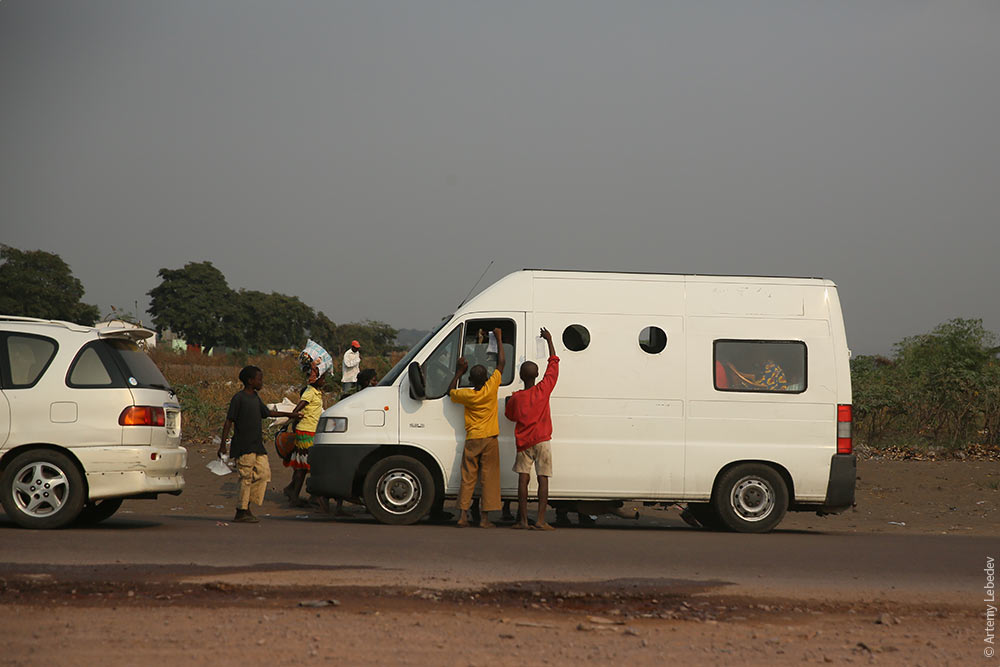 Задние окна особенно красивы. The rear windows tend to be particularly pretty. 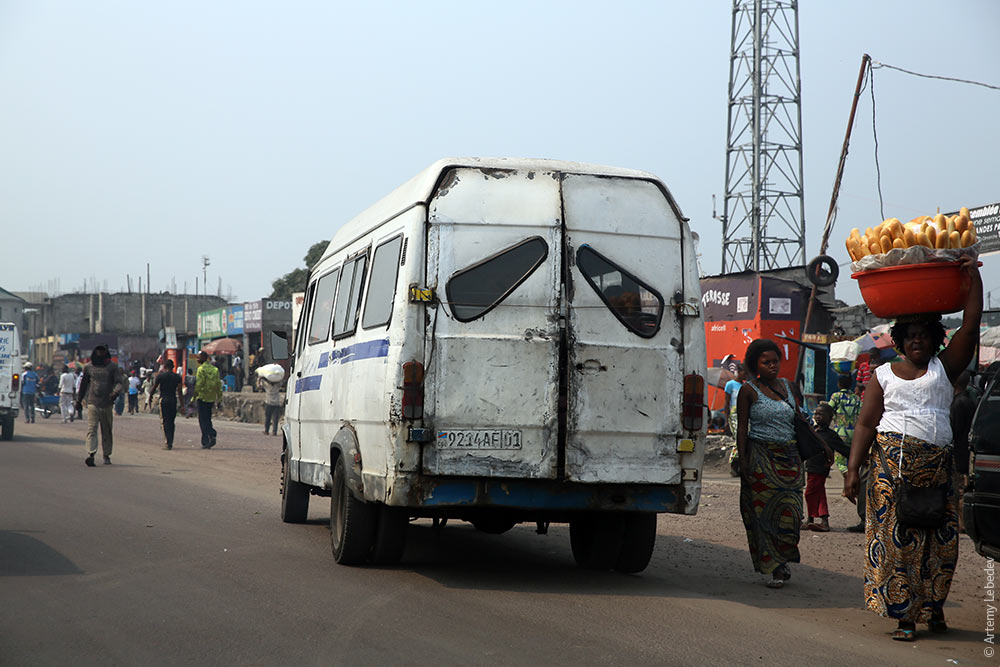 Почти все микроавтобусы — Мерседесы-207. Водители гоняют со страшной силой, народу в салон набивается куча, и все едут с легким оттенком фатализма. В народе эти микроавтобусы называются «дух смерти» (l’esprit de mort). Обычно дух смерти покрашен в цвета флага Украины или белым. Almost all the vans are Mercedes 207s. Crammed full of passengers, they careen down the streets at breakneck speeds, and it’s impossible to ride one without a certain feeling of fatalism. The people call these vans «the spirit of death» (l’esprit de mort). The spirits of death are usually painted the colors of the Ukrainian flag or white. 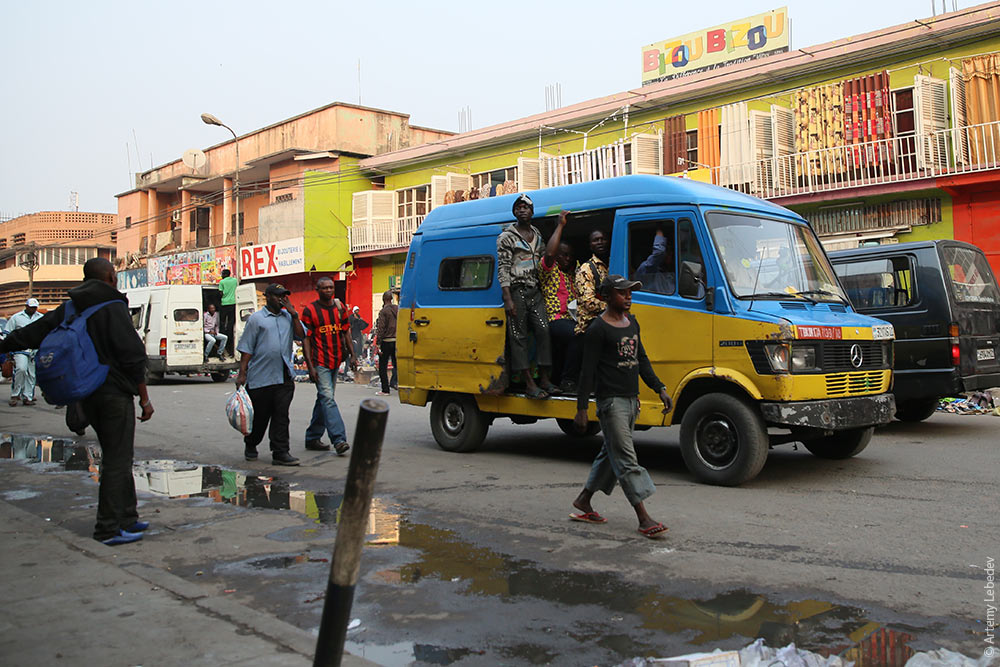 В автобусе как-то надежнее себя чувствуешь. The buses feel somewhat safer in comparison. 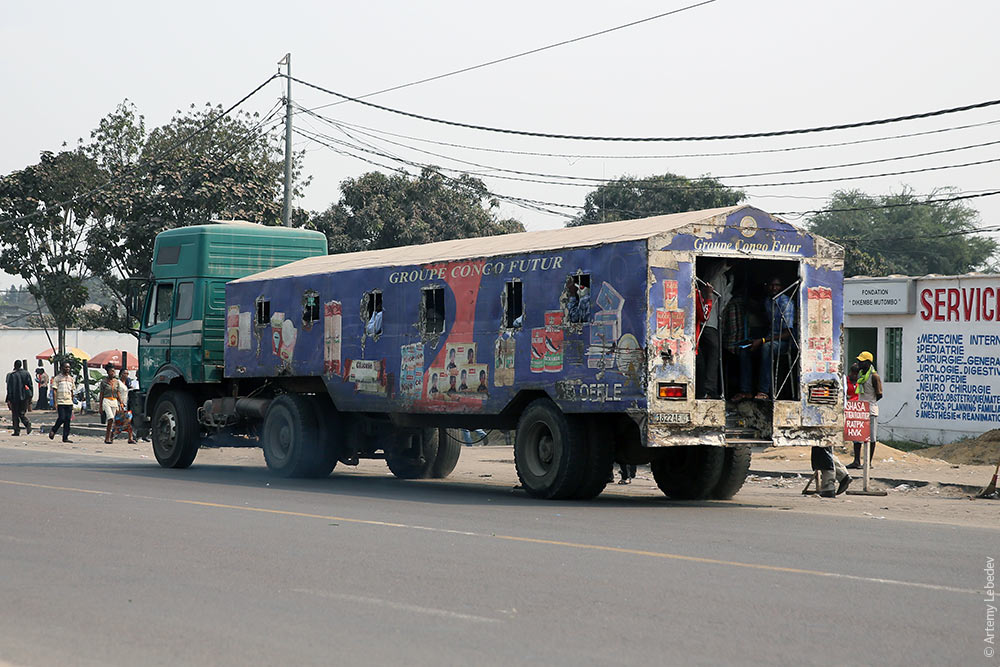 Я как-то был уверен, что знал все основные виды животных. Оказалось, что в ДР Конго водятся окапи — такие зеброжирафы. Вот чучело одного как раз выкинули. I was fairly certain that I knew all the major species of animals, but it turns out that the DR Congo has something called an okapi—sort of a cross between a zebra and a giraffe. Here’s a stuffed one that someone threw out: 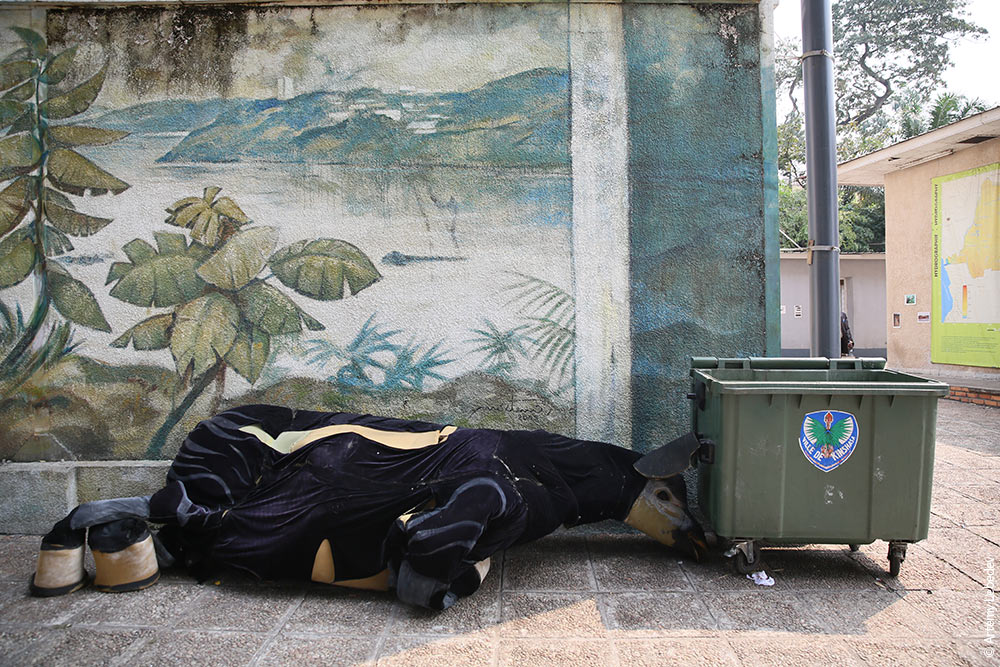 В жизни окапи выглядит так: And this is what okapis look like in real life: 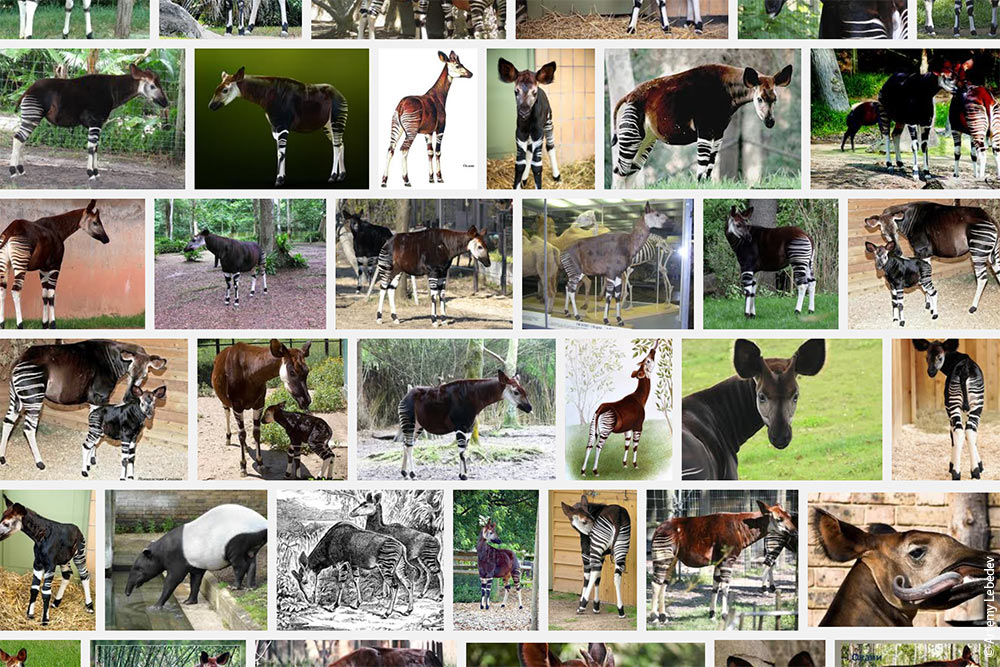 Желающие культурно посидеть и перекусить отправляются в соответствующее место. Тут все синее — и стулья, и стволы пальм. If you want to sit down and have a civilized meal, this is where you can go. Everything is blue here, from the chairs to the palm tree trunks. 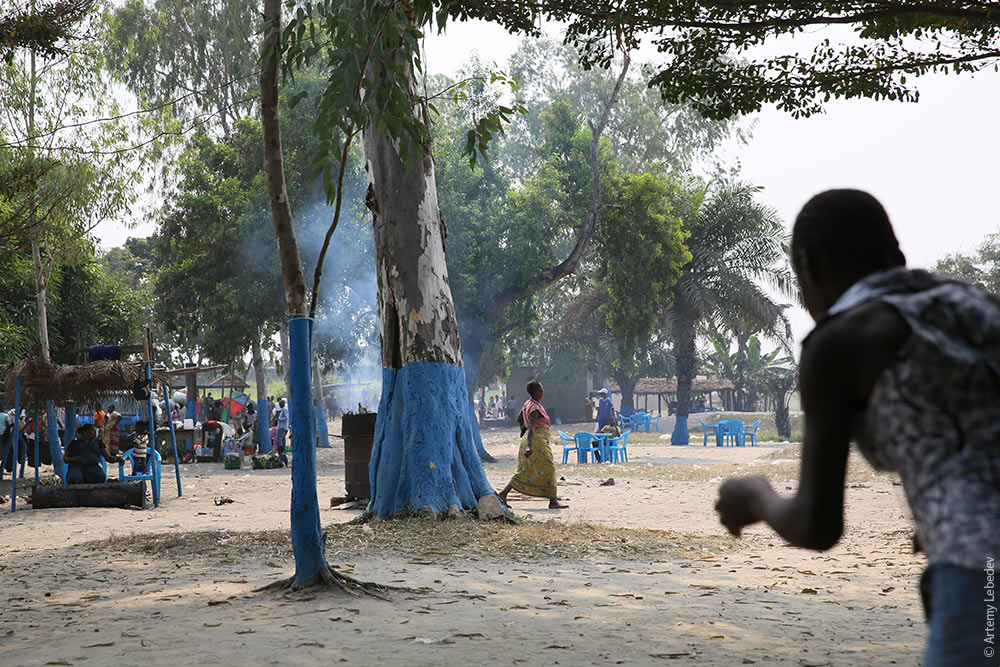 Гостям подают рыбу, запеченную в банановых листьях. Guests are served baked fish wrapped in banana leaves. 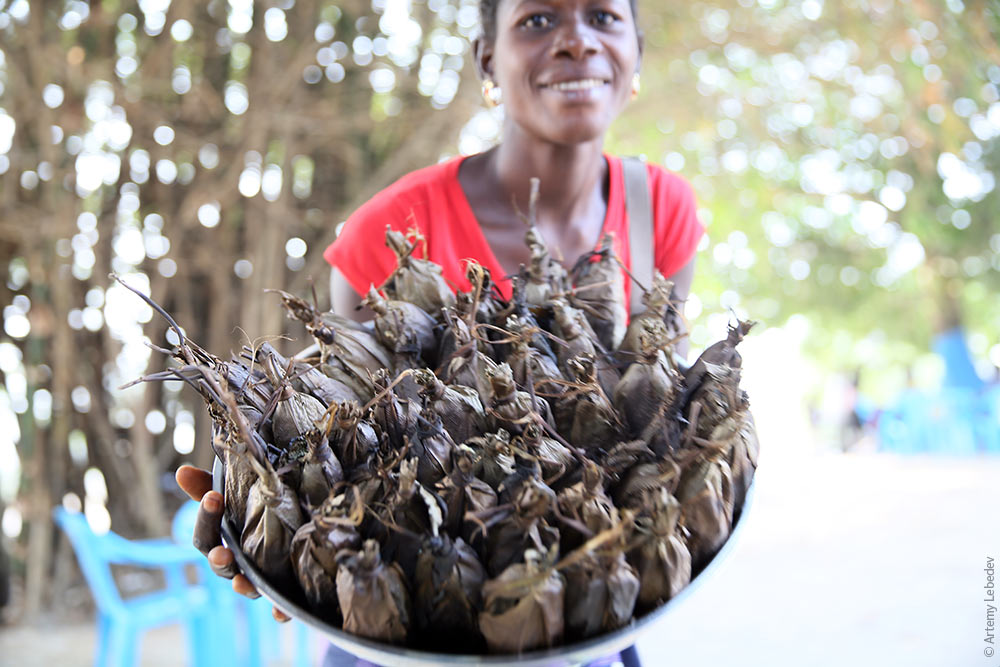 И опарышей. And maggots. 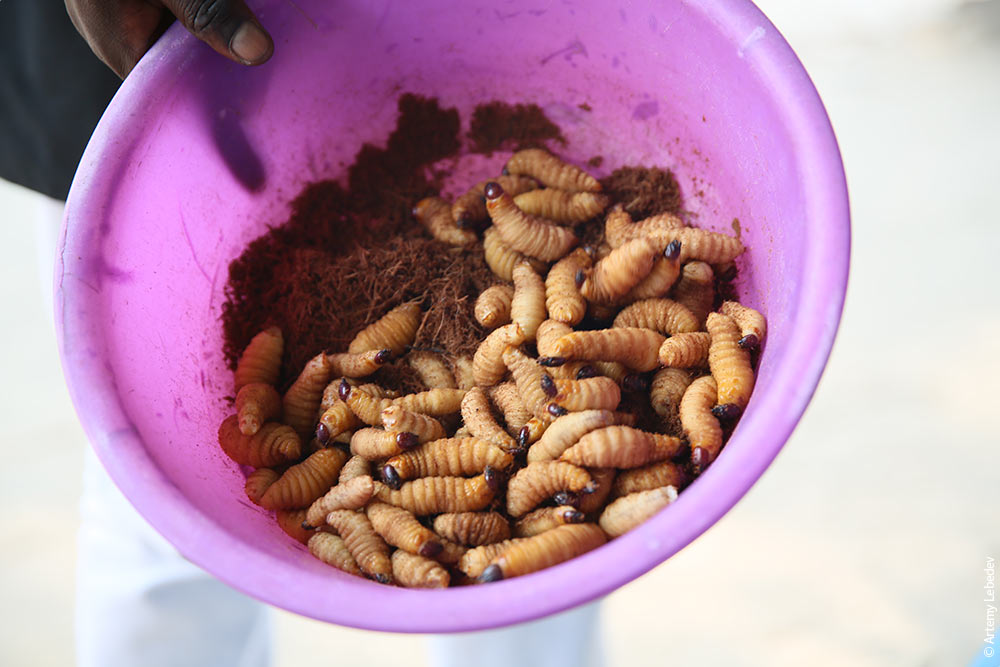 Посмотрим на жизнь деревни. Let’s see what life in a village looks like. 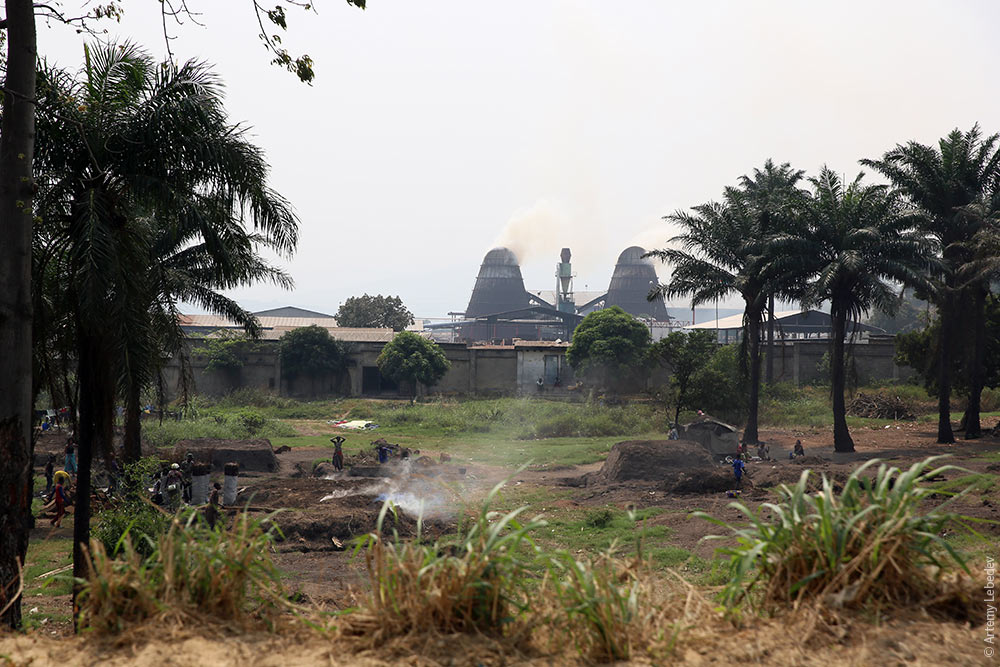 Белый человек тут называется «мунделе». Когда идешь по улице, отовсюду слышно: «мунделе, мунделе». Большое событие. В городе не так удивляются. A white person is called mundele here. As you walk down the street, you hear «Mundele, mundele!» coming from all sides. It’s a major event. People in the city find you somewhat less astonishing. 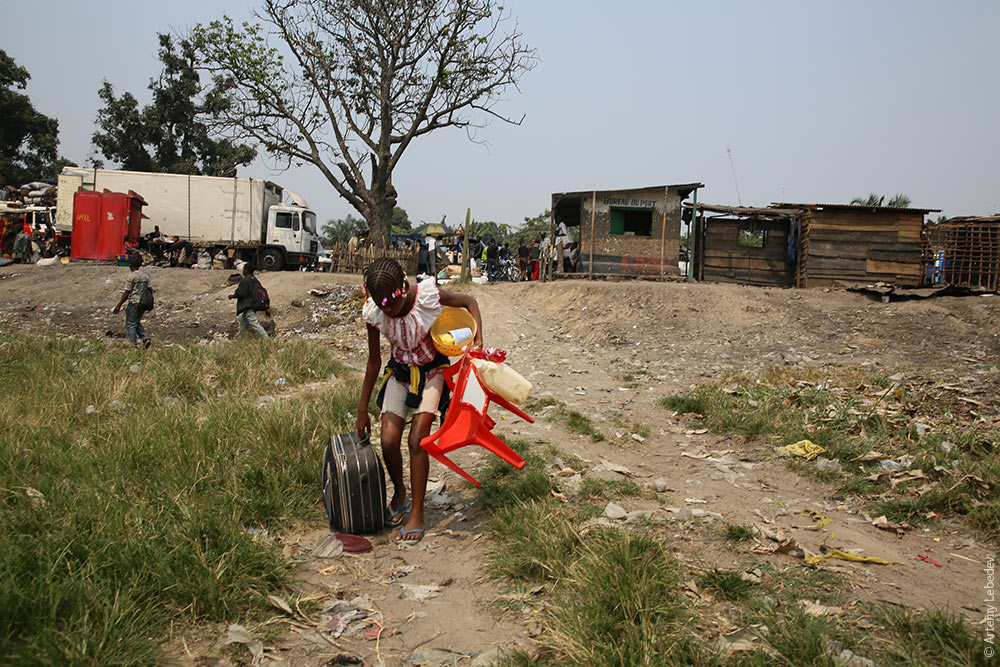 Пирамида на фоне — мешки с углем. На переднем плане — торговля зерном, в середине сцены — настольные футболы. The pyramid in the background is bags of coal. There’s grain being sold in the foreground, and foosball tables in the middle. 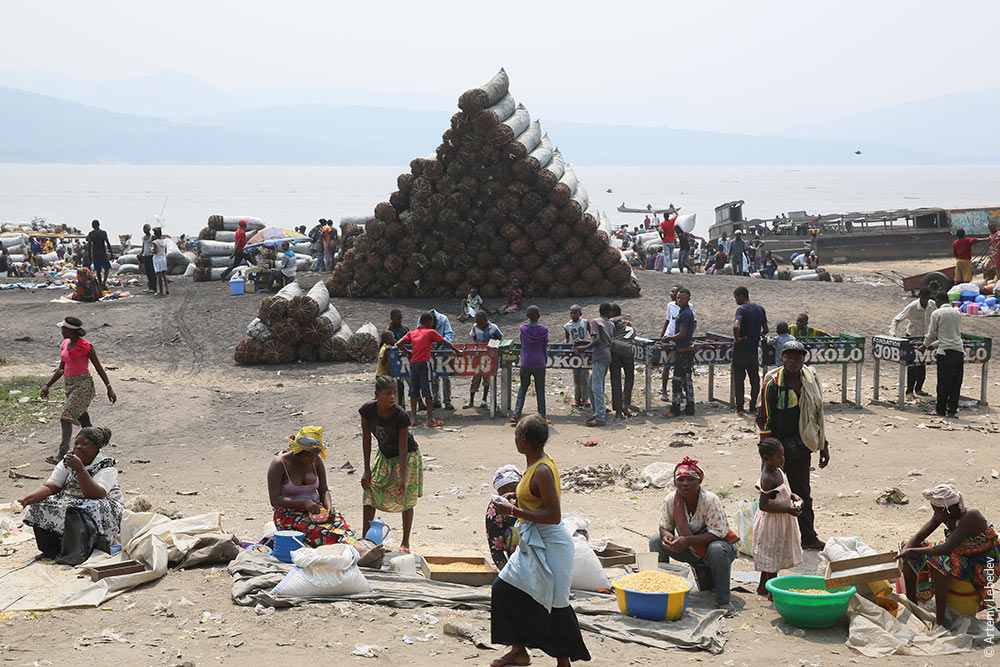 Рыбаки идут с уловом. Fishermen returning with their catch. 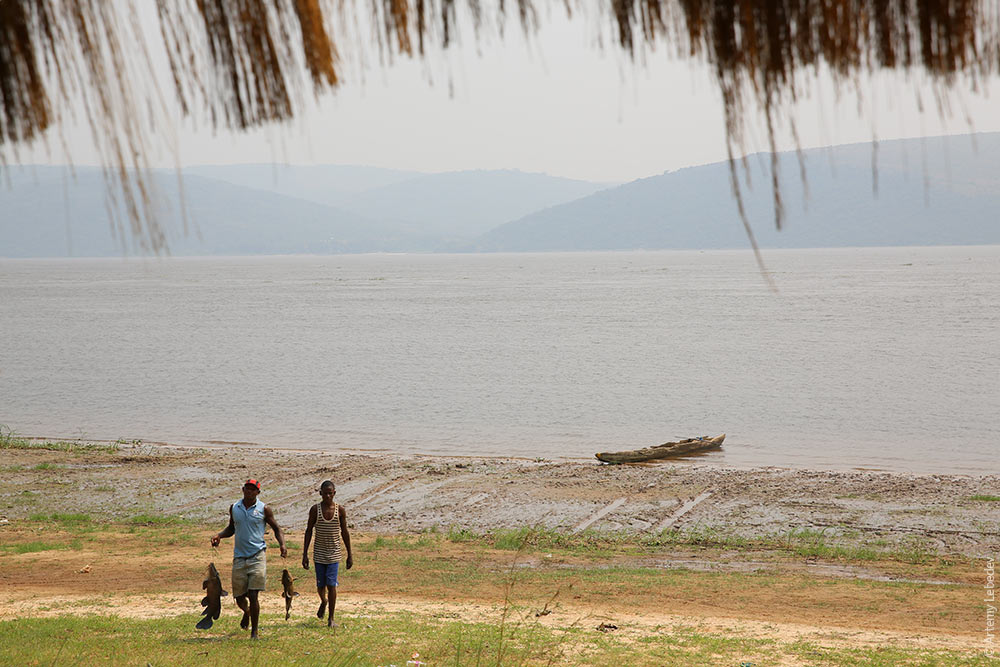 Идет строительство моста. Большинство людей в кадре — зеваки и бездельники. A new bridge is being built. Most of the people in the photo are idly gawking. 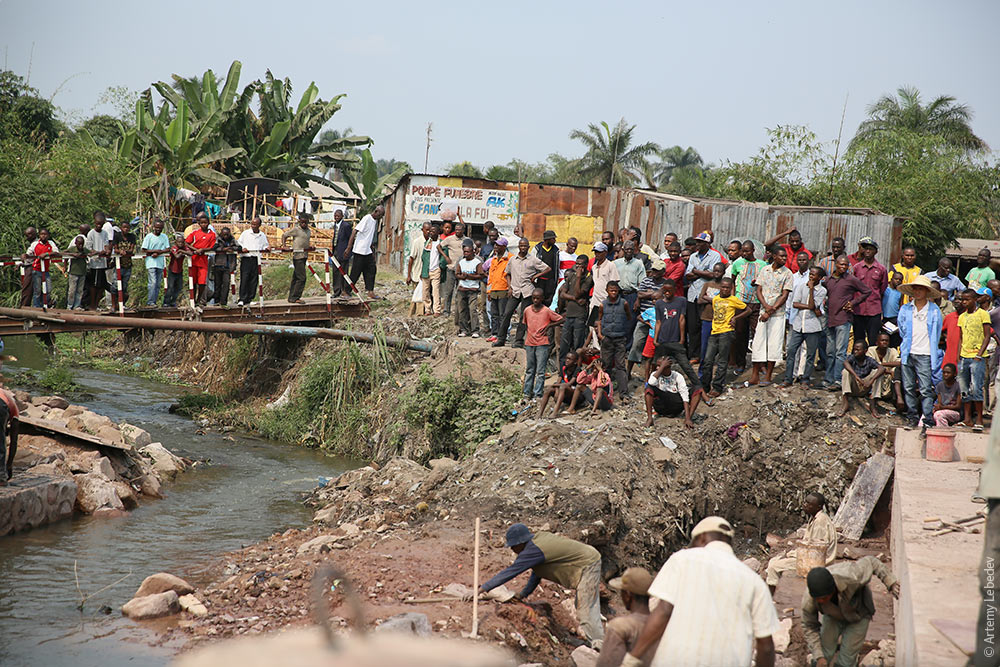 В ДР Конго существует потрясающая традиция шить униформу для праздника. Если у кого-то день рождения или свадьба, организатор вечеринки идет на рынок и покупает липуту, из которой шьет всем гостям мапуты. И сразу понятно — люди вместе проводят время. The Congolese have a fantastic custom of making uniforms for celebrations. Whenever there’s a birthday or wedding, the organizer of the festivities goes to the market and buys a liputa, from which she then sews a maputa for each guest. Now it’s immediately obvious that the group is celebrating together. 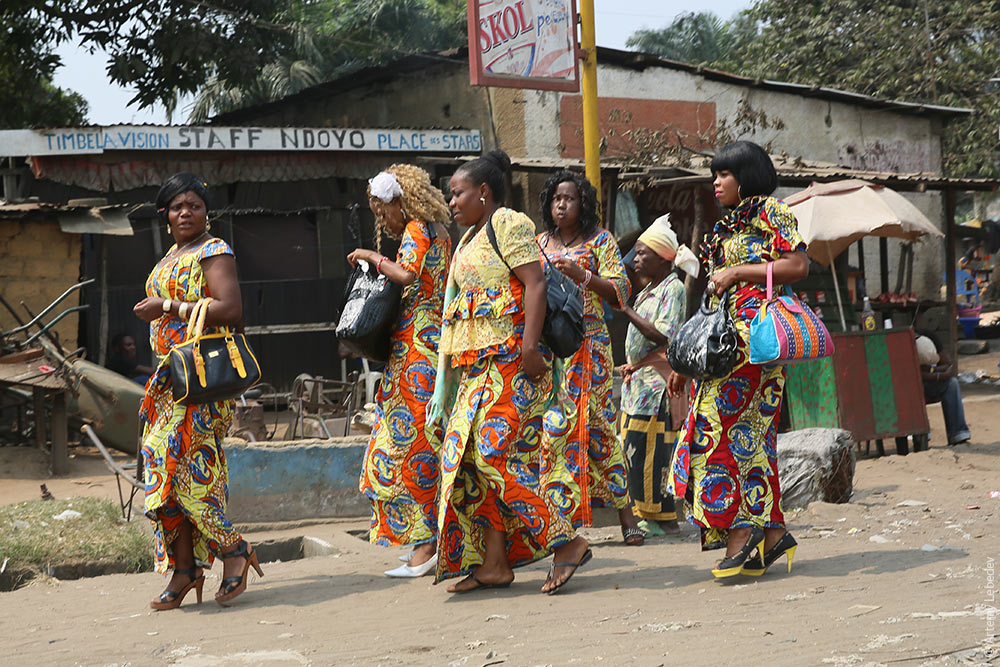 На каждом шагу — обмен валюты. There are currency exchanges on every corner. 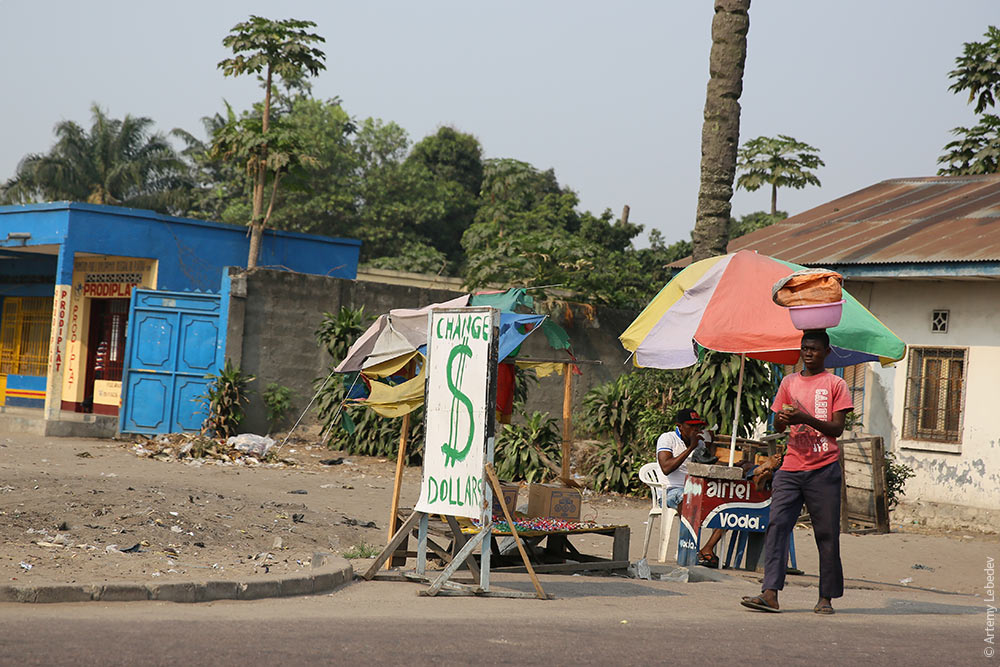 Но больше всего в ДР Конго аптек. Аптека в каждом третьем доме, просто невероятно. But the prize for most ubiquitous establishment in the DR Congo goes to pharmacies. The number of pharmacies is simply unbelievable—there’s one in every third building. 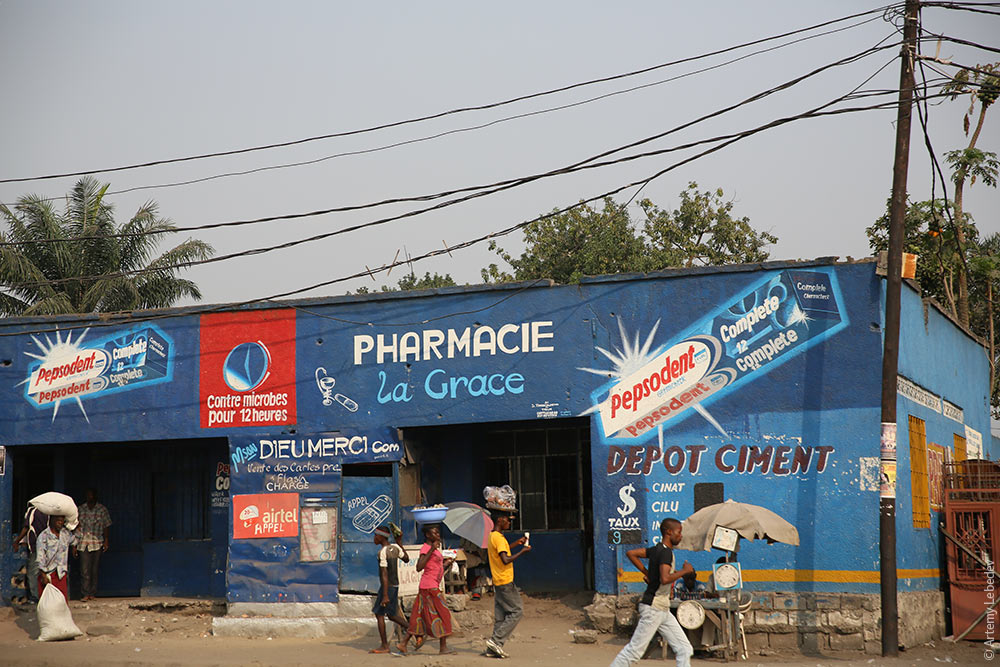 И на каждой аптеке обязательно изображена змея вокруг Гиппократовой чаши, прям как у нас. And every pharmacy has an image of a snake coiled around a cup, just like in Russia. 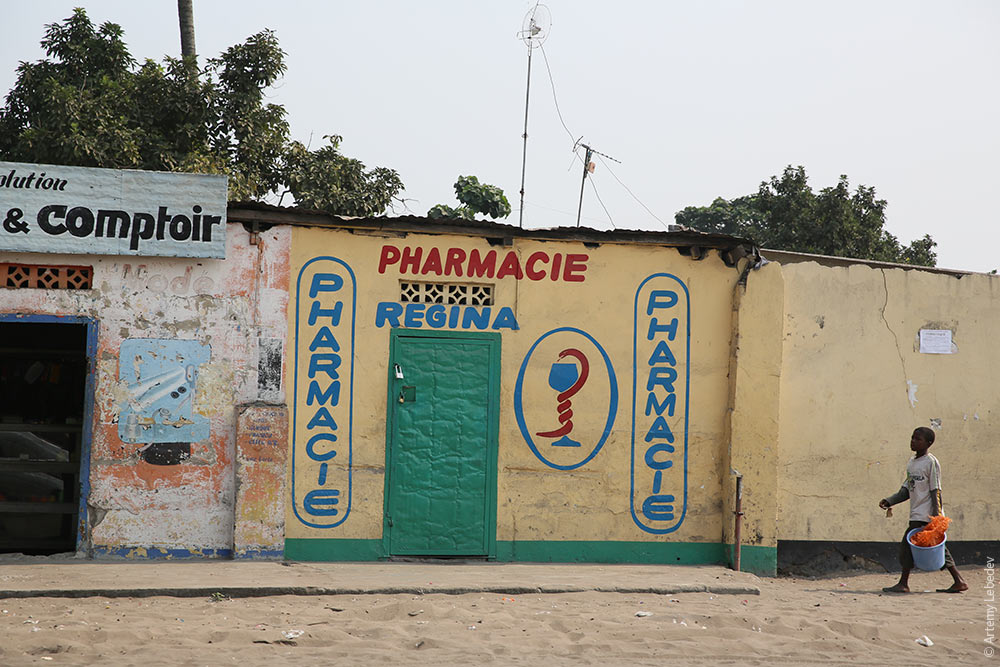 КиншасаKinshasaНа карте мира MapДовольно милый город. A fairly nice city. 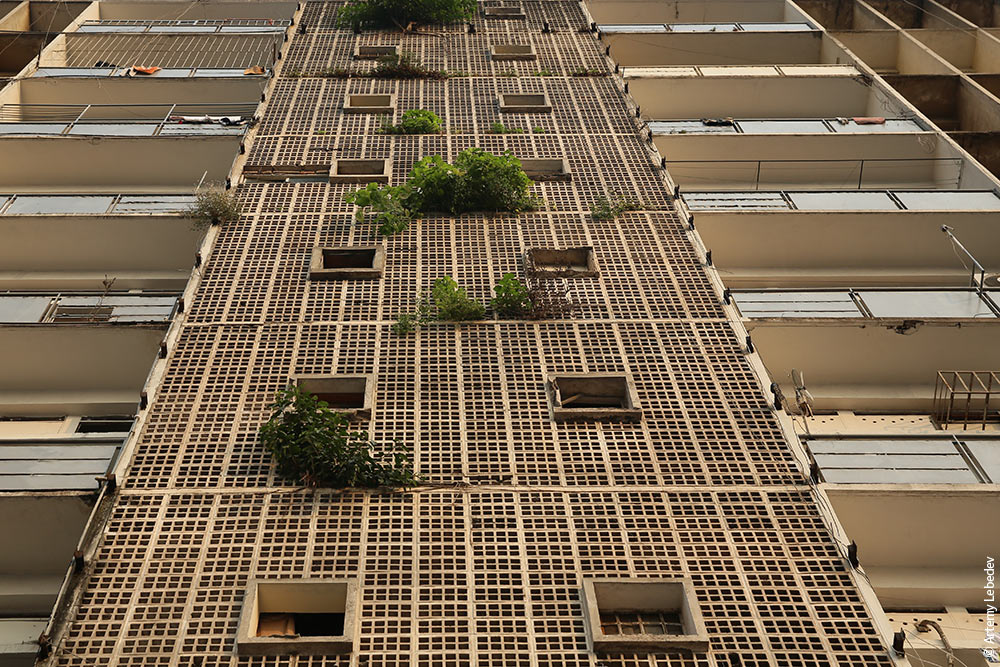 С оживленным центром. With a lively downtown area. 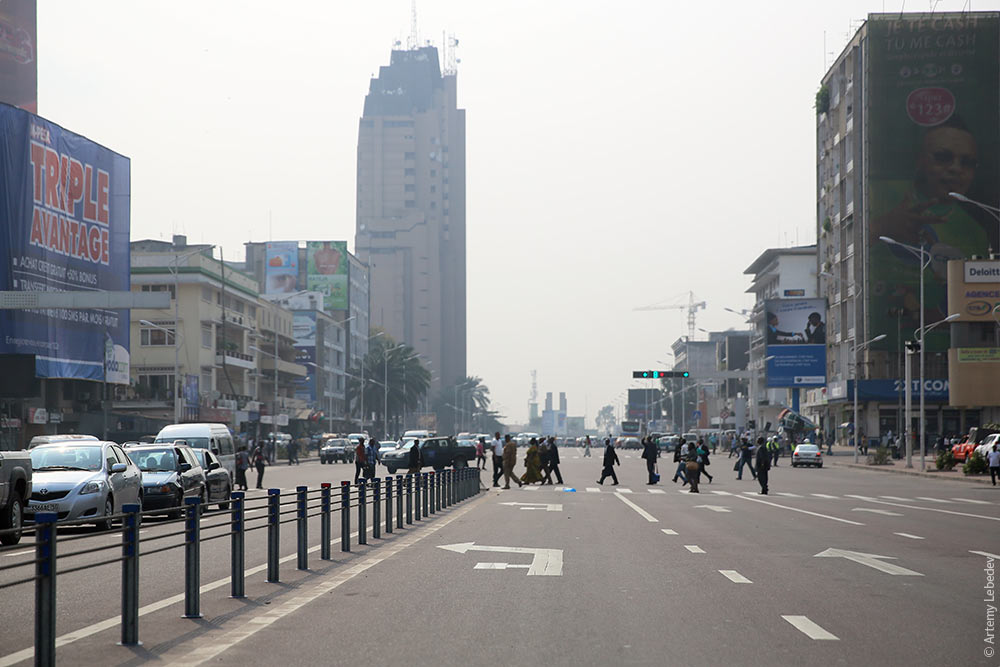 Столичный светофор. The capital’s traffic lights. 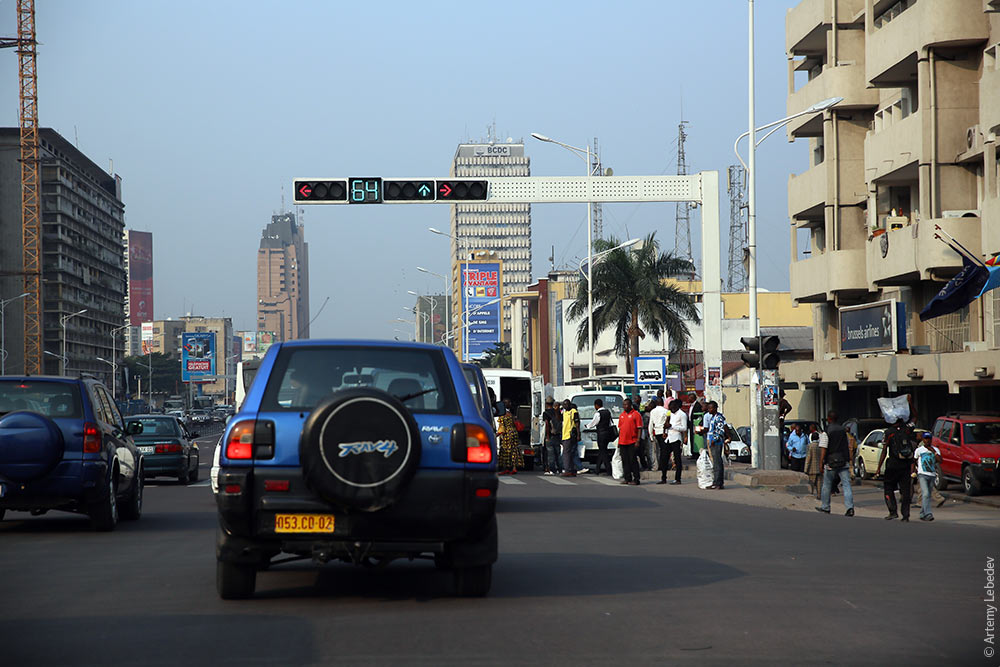 Городская урна. A street trash can. 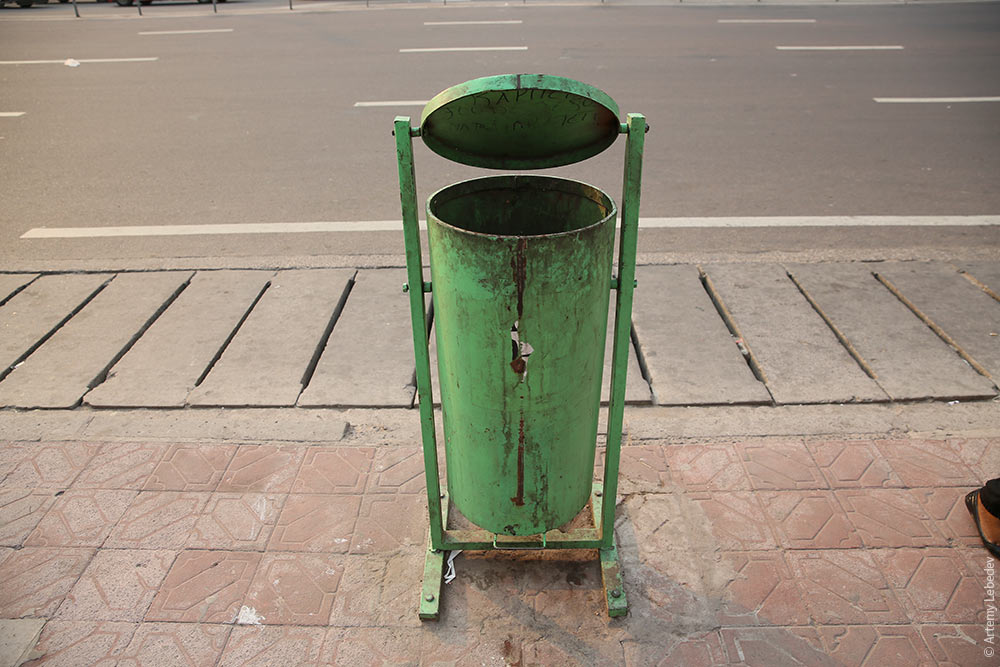 Уборка мусора. Garbage collection. 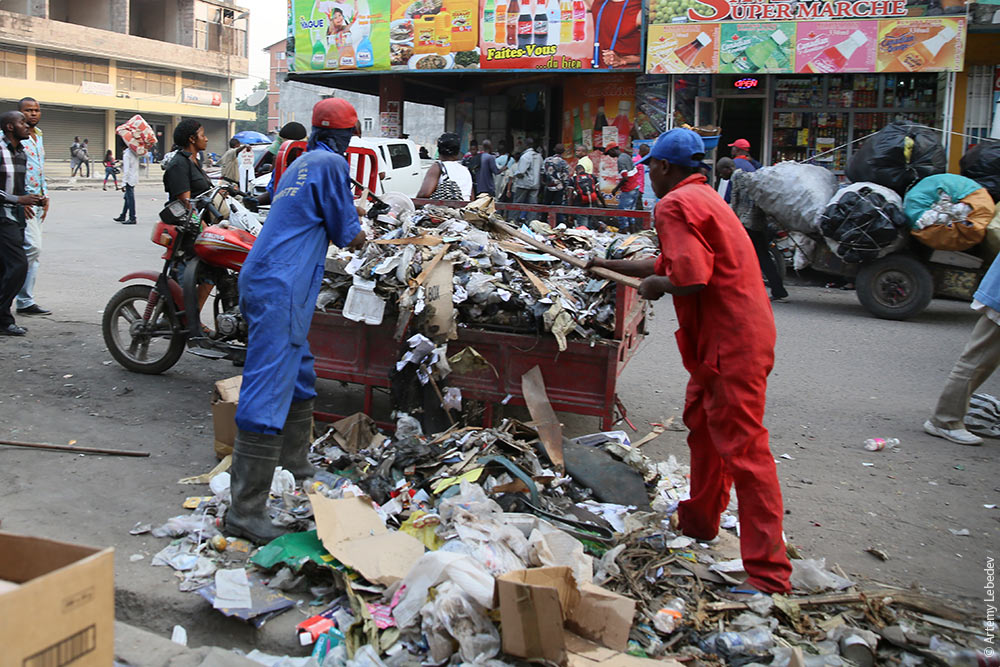 Знак автобусной остановки (как в Пакистане, что удивительно). A bus stop sign (identical to the ones in Pakistan, which is surprising). 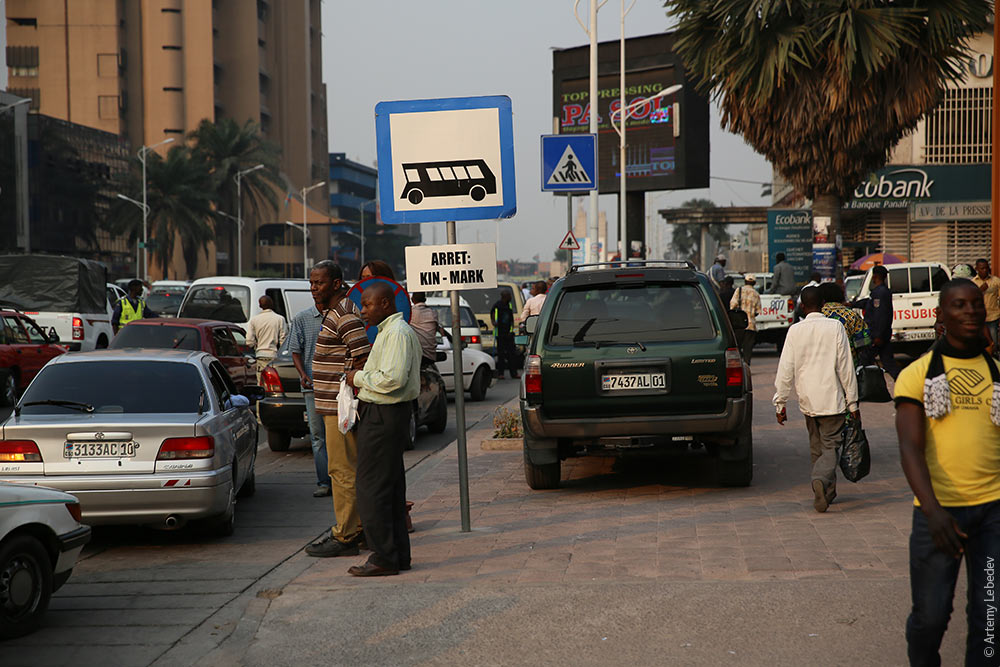 Автобусная остановка. Скамейка сделана вдоль всей внутренней поверхности. Павильон ночью освещается. A bus shelter. It’s illuminated at night and has a bench that runs along its entire inside perimeter. 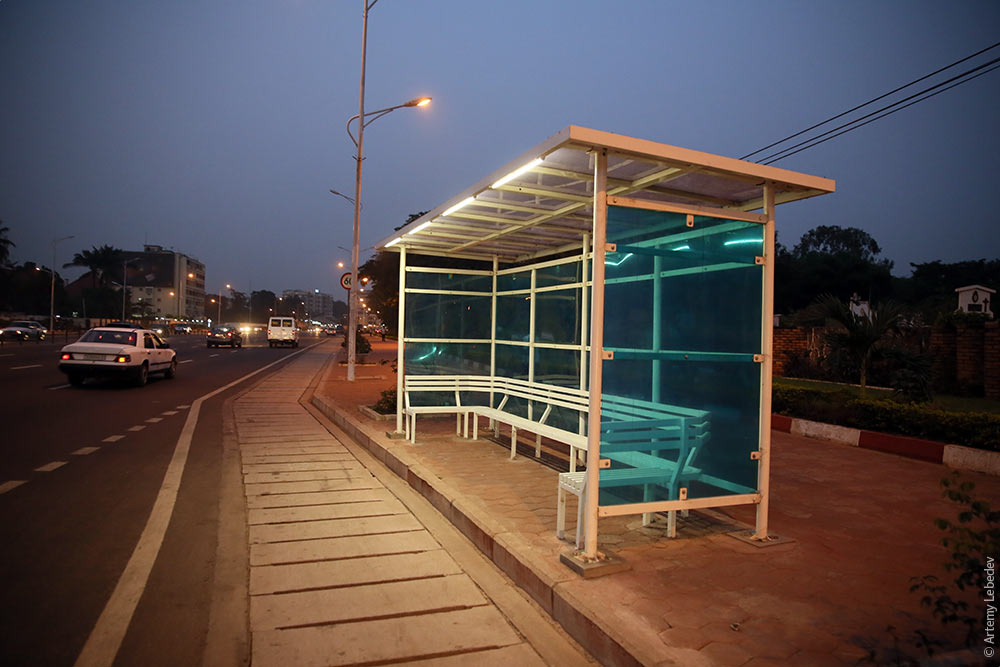 Городская жизнь. City life. 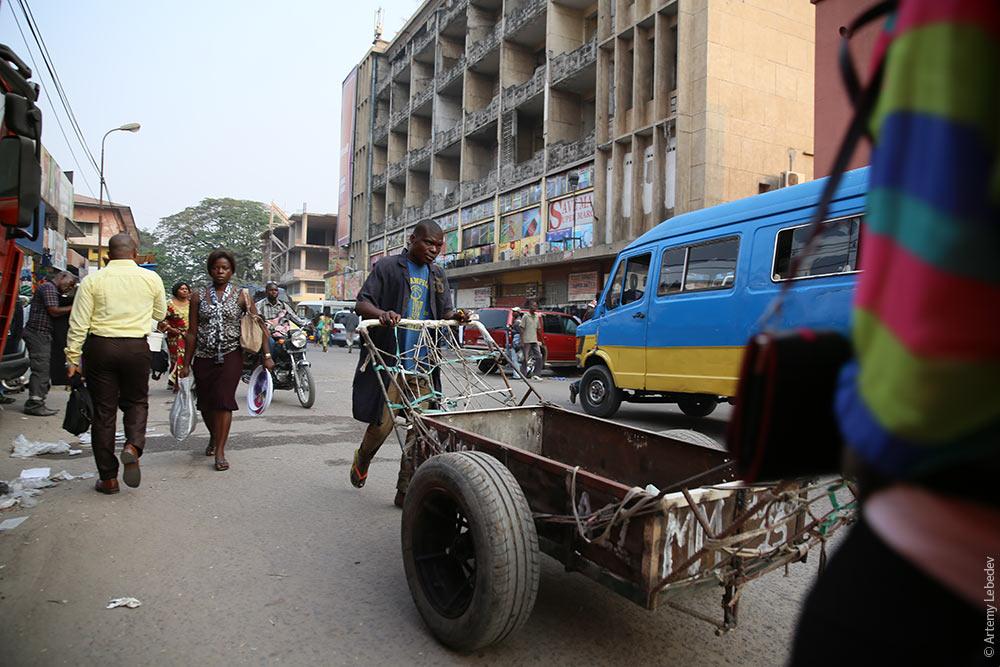 Казино. A casino. 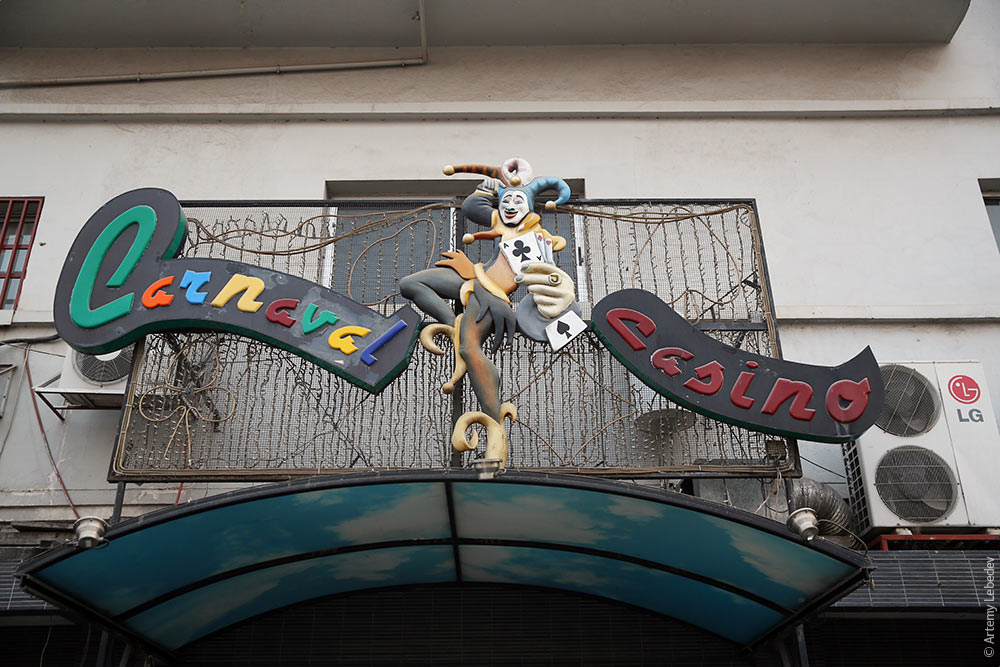 Торговля фруктами. Fruit vendors. 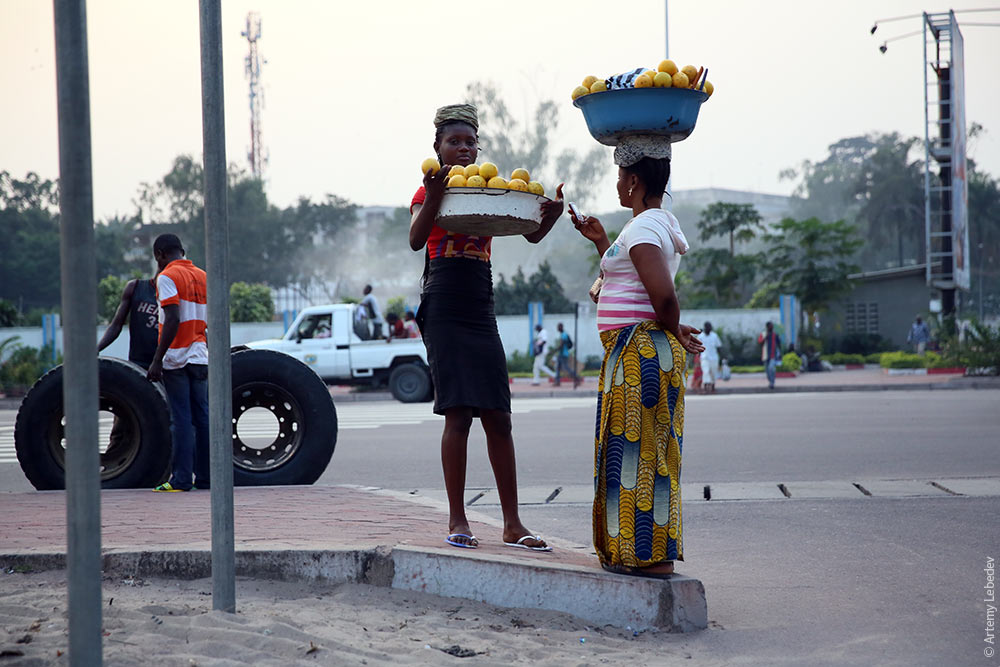 Уличный указатель. A street sign. 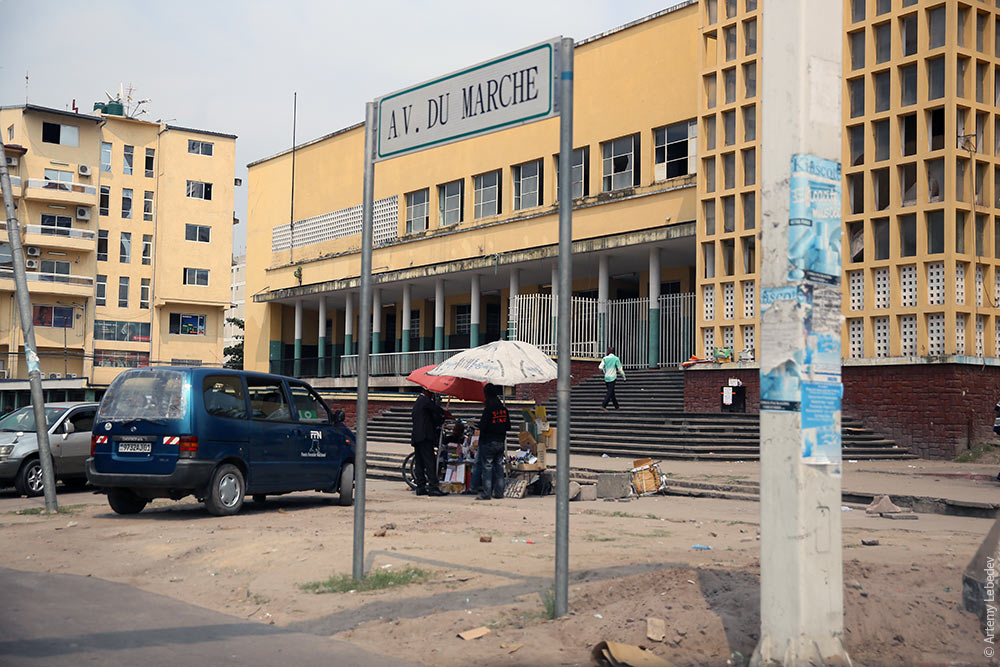 Офис ООН. A UN office. 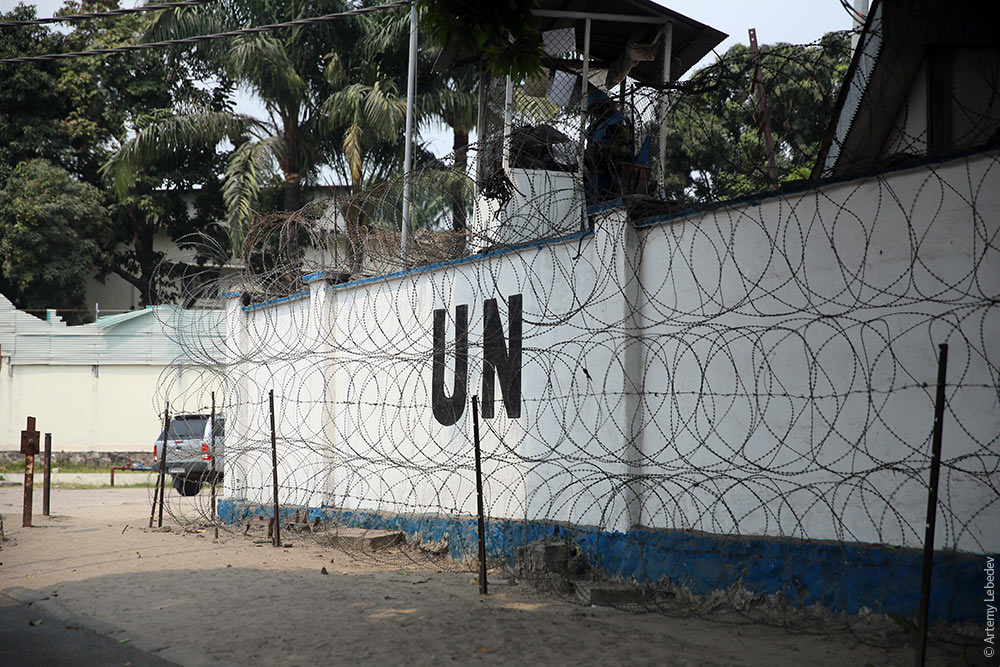 Двор перед супермаркетом. A parking lot in front of a supermarket. 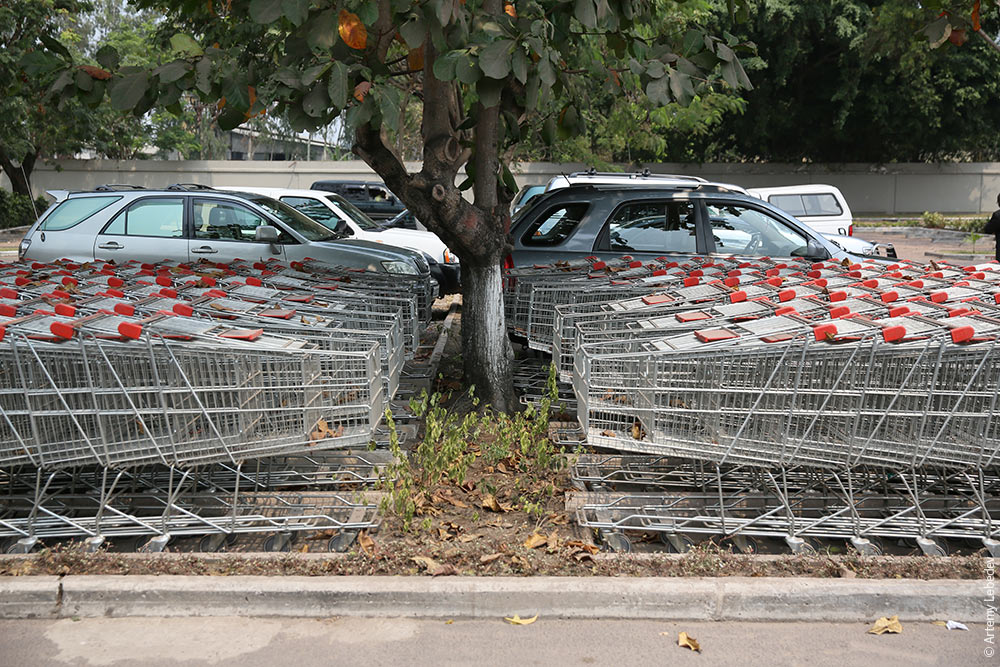 Двор школы искусств, где молодые скульпторы выставляют свои произведения, например — «Муж бьет свою жену». The front lawn of an art school, where young sculptors exhibit their works. For example, here’s one titled «Man Beating His Wife.» 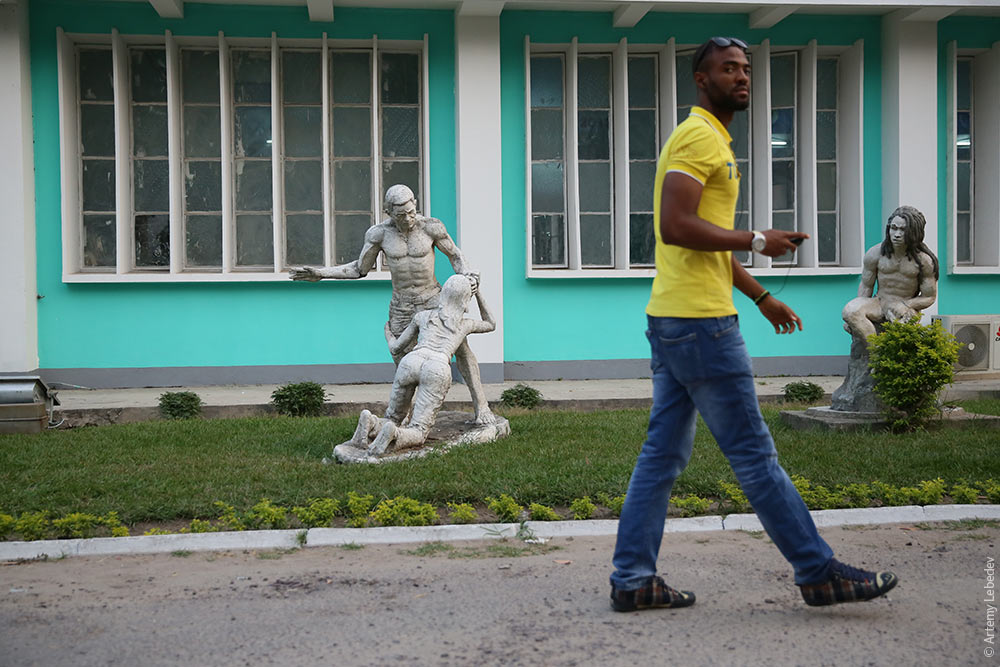 А рядом с каким-то музеем лежит беззащитная статуя местного первооткрывателя Генри Стенли, которому зачем-то переломали ноги в момент очередного народного беспокойства (ср. Ирак и Иран). And here, lying next to some museum, is a defenseless statue of Congo explorer Henry Stanley. For some reason, his feet were broken off in one of the recent episodes of civil unrest (compare to Iraq and Iran). 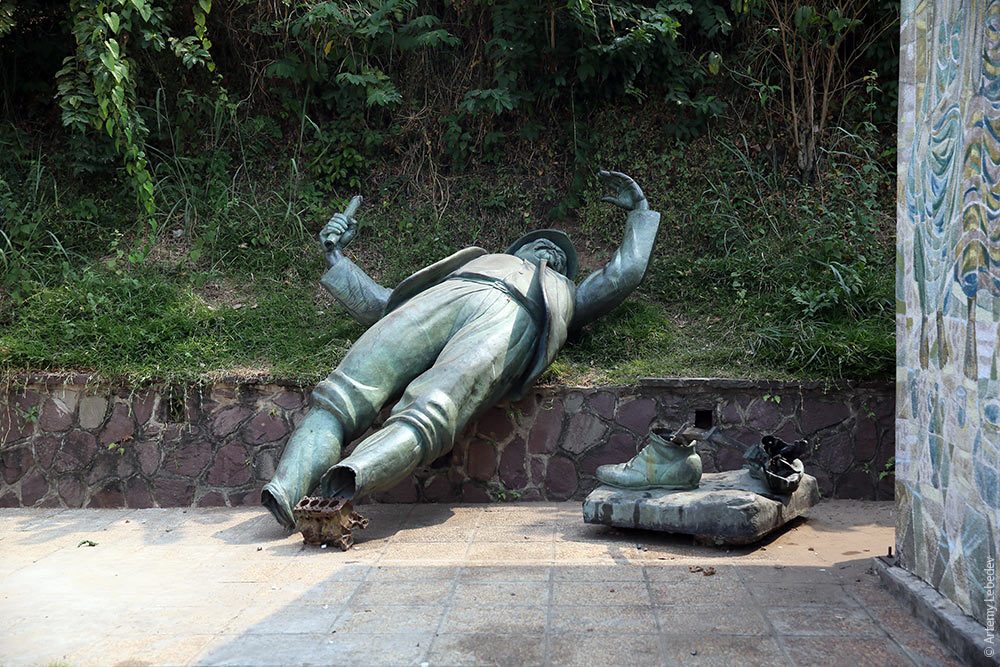 Чтобы у читателя осталось объективное представление о жизни города, посетим не только центр. In order to paint an objective picture of the city for our readers, let’s venture beyond the downtown area as well. 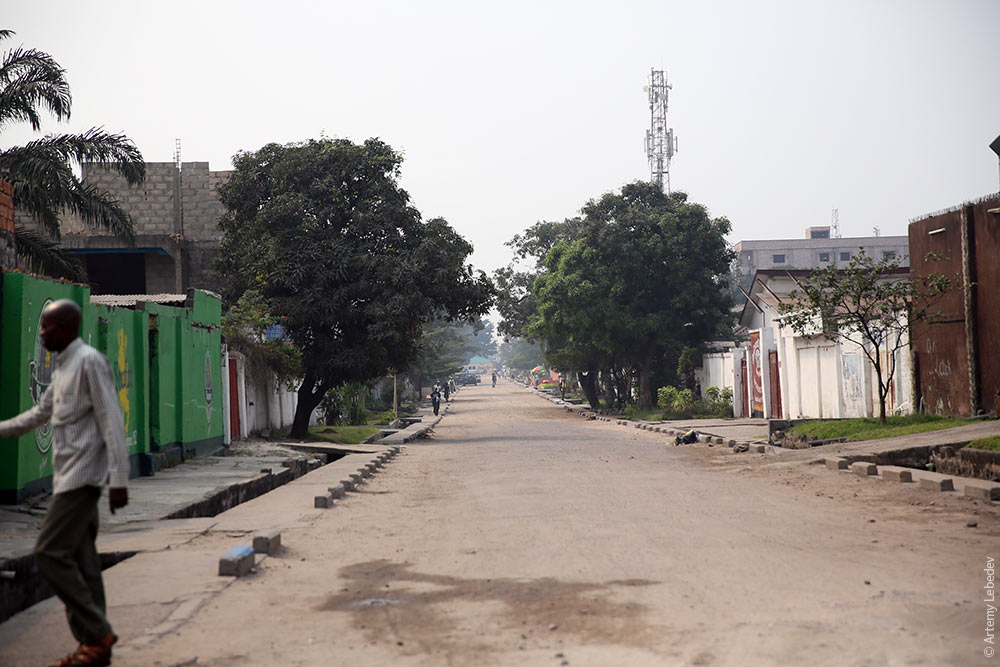 Светофоры тут попроще. The traffic lights here are simpler. 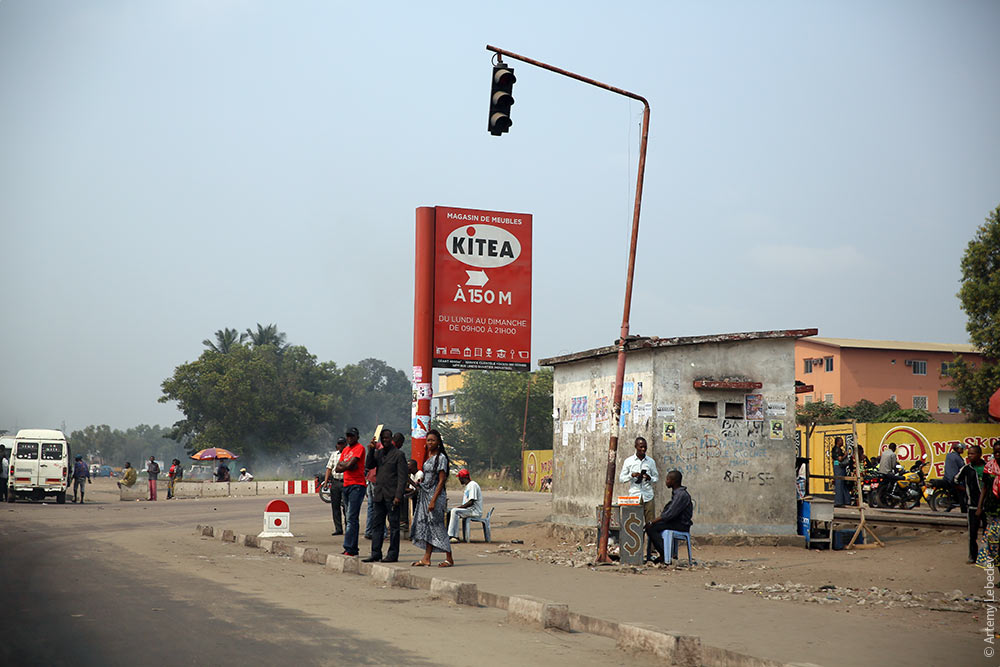 Торговля поактивнее. Commerce is more active. 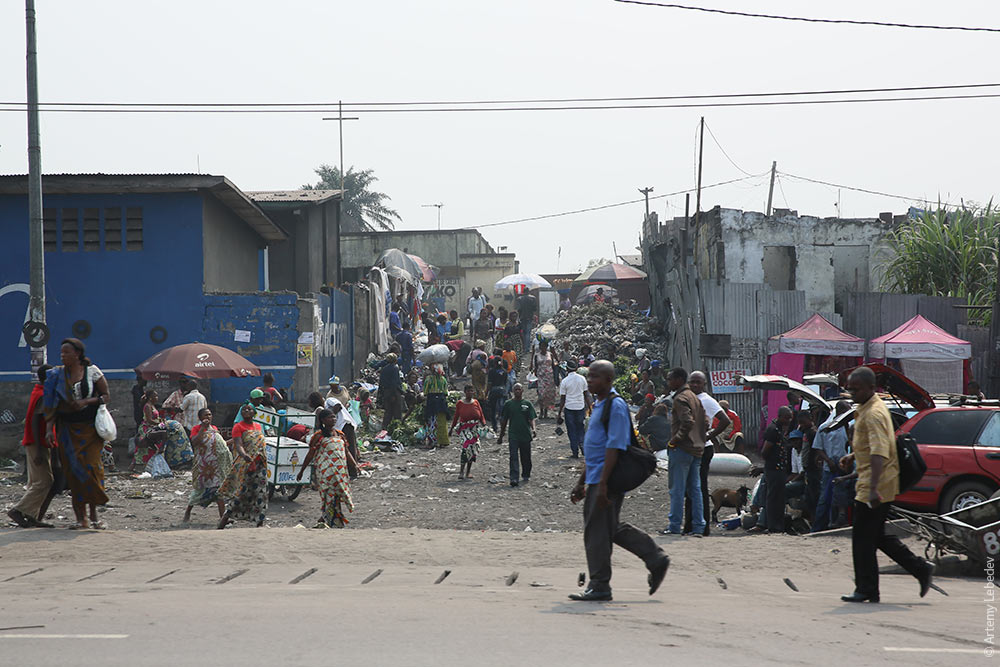 Визуальный фон поплотнее. The visual backdrop is denser. 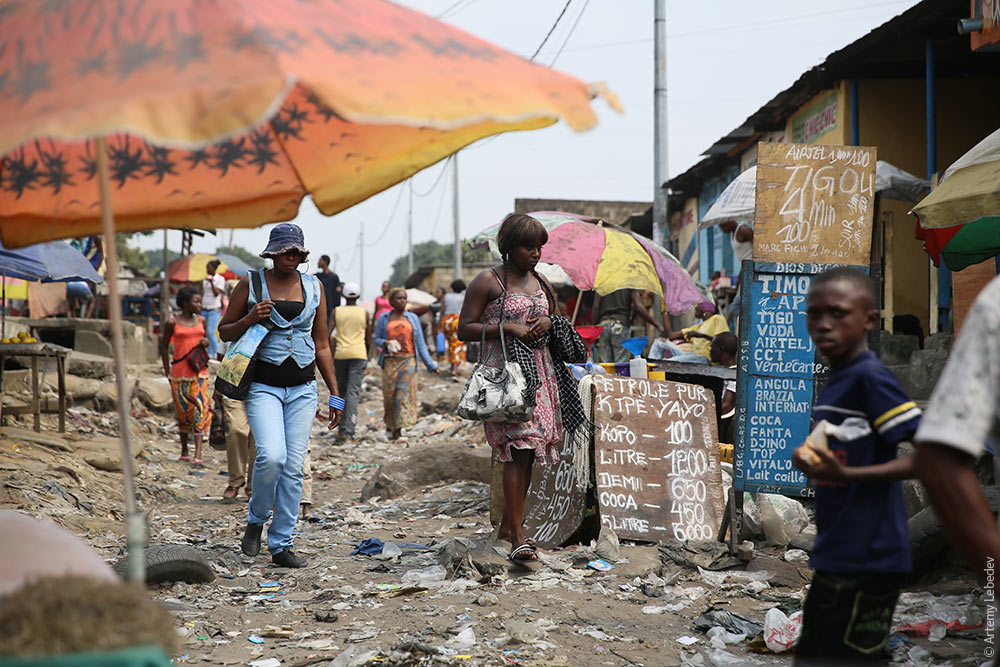 Земля ближе. The soil is closer. 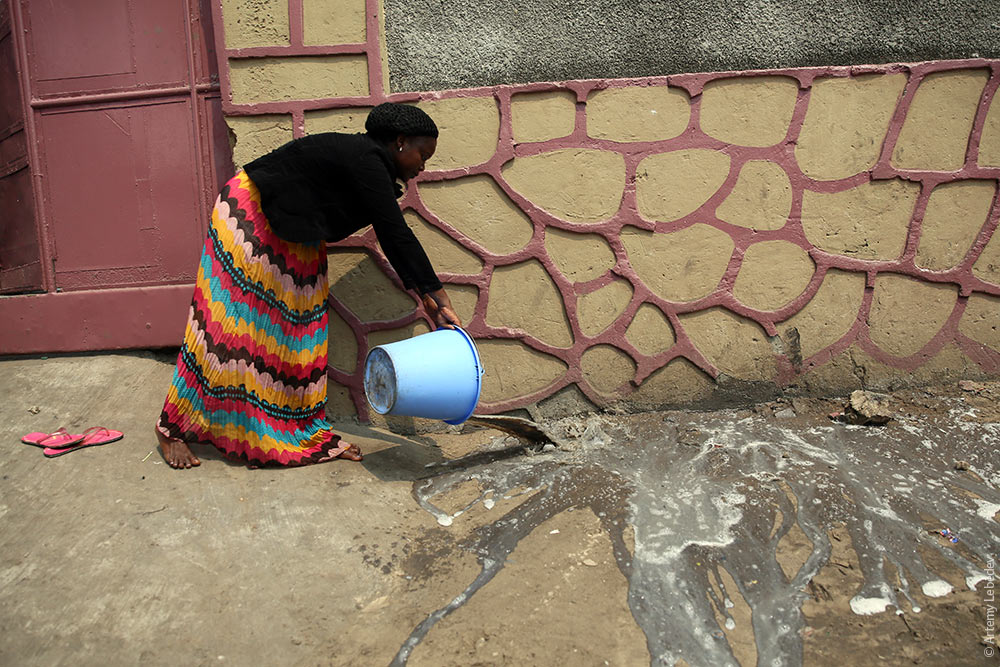 Ценники почестнее. The prices are more reasonable. 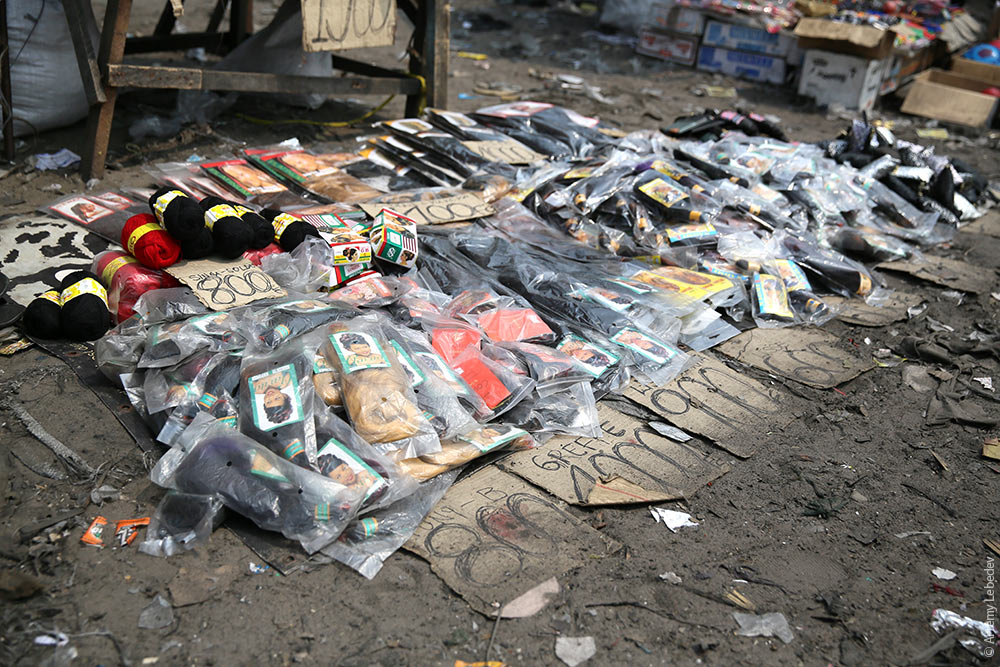 * * * Главный инструмент дорожного полицейского в ДР Конго — палка с гвоздями. Ее кладут на дорогу, принуждая водителей остановиться. The main tool used by traffic police in the DR Congo is a stick with nails. They put it down on the ground to force drivers to stop. 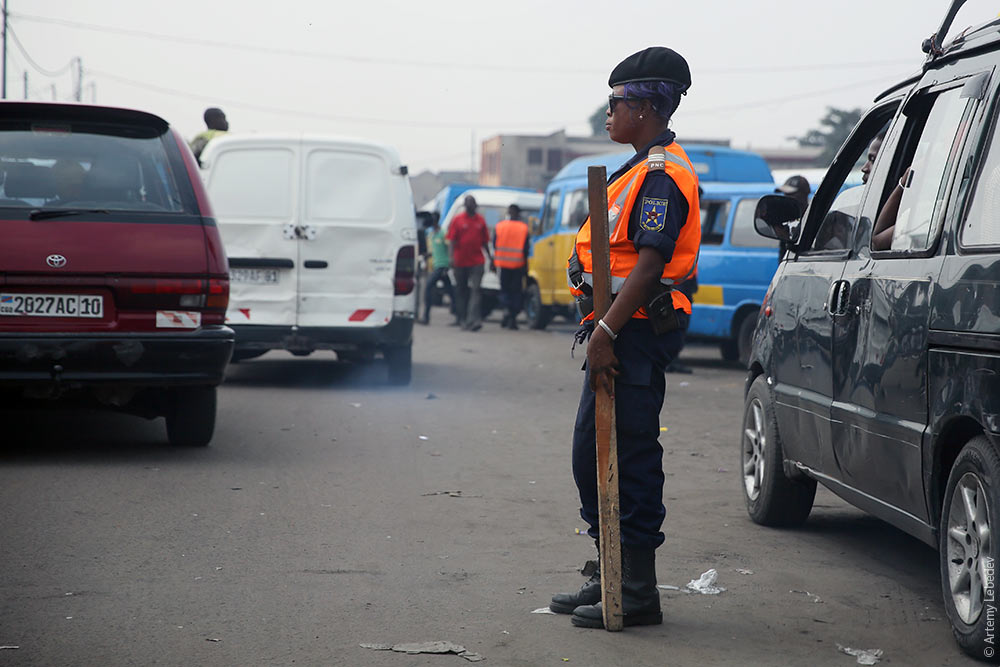 Впрочем, из тех же материалов можно и сувенир домой захватить. You can also get a souvenir made from the same materials to take home with you.  |